Free Types of Clouds Worksheet
Clouds are an important part of our environment and understanding the different types of clouds can enhance our knowledge about weather patterns and climate. If you are in search of a comprehensive worksheet to help you teach your students or children about the various types of clouds, you have come to the right place. Our free Types of Clouds Worksheet is designed to engage young learners and provide them with a clear understanding of the different cloud formations that exist in our atmosphere.
Table of Images 👆
More Other Worksheets
Kindergarten Worksheet My RoomSpanish Verb Worksheets
Cooking Vocabulary Worksheet
DNA Code Worksheet
Meiosis Worksheet Answer Key
Art Handouts and Worksheets
7 Elements of Art Worksheets
All Amendment Worksheet
Symmetry Art Worksheets
Daily Meal Planning Worksheet
What are the four main types of clouds?
The four main types of clouds are cirrus, cumulus, stratus, and nimbus. Cirrus clouds are thin and wispy, cumulus clouds are fluffy with a flat base, stratus clouds are layered and cover the sky like a blanket, and nimbus clouds are dark and heavy with the potential to bring rain or storms.
How are stratus clouds different from cumulus clouds?
Stratus clouds are low-lying clouds that appear as a blanket or layer covering the sky, often bringing overcast conditions and light precipitation. On the other hand, cumulus clouds are puffy and white with a flat base, typically forming at lower to middle altitudes and indicating fair weather. In summary, stratus clouds are uniform and layered, while cumulus clouds are fluffy and individual, with distinct shapes.
What does it mean when a cloud is classified as "nimbus"?
When a cloud is classified as "nimbus," it means that the cloud is capable of producing precipitation. The term "nimbus" is often used to describe rain clouds, as they are filled with water droplets that are heavy enough to fall as rain. Additionally, clouds classified as "nimbus" can also produce other forms of precipitation such as snow, sleet, or hail, depending on atmospheric conditions.
Describe the appearance and characteristics of cirrus clouds.
Cirrus clouds are high-altitude clouds that appear wispy and feathery with thin, delicate strands that streak across the sky. They are composed of ice crystals and can form at altitudes above 20,000 feet. Cirrus clouds are often a sign of fair weather but can also precede a change in the weather as they are pushed by high-altitude winds. These clouds are thin and translucent, allowing sunlight to pass through, giving them a white or colorless appearance during the day and often glowing pink or orange at sunset or sunrise.
How are stratocumulus clouds formed?
Stratocumulus clouds form when air layers containing water vapor rise, cool, and condense into visible droplets. These clouds typically develop in stable atmospheric conditions, such as when a layer of warm, moist air is trapped beneath a layer of cooler air. The moisture in the warm air condenses as it rises and cools, leading to the formation of stratocumulus clouds which appear as low, lumpy cloud layers in the sky.
What weather conditions are associated with cumulonimbus clouds?
Cumulonimbus clouds are associated with severe weather conditions such as thunderstorms, heavy rainfall, lightning, hail, gusty winds, and sometimes tornadoes. These clouds can reach great heights in the atmosphere and typically have a towering, anvil-shaped appearance.
Explain the formation and characteristics of altocumulus clouds.
Altocumulus clouds typically form between 6,500 to 20,000 feet in the atmosphere and are characterized by white or gray patches or layers with some sun or moon visible through them. They are created by the partial lifting of a stable layer of air, leading to the condensation of water droplets or ice crystals. These clouds often indicate fair weather, but can also signal a change in the weather if they thicken and lower. Altocumulus clouds are known for their cotton-like appearance and can sometimes appear in the sky in parallel bands or sheets.
Describe the unique shape and features of lenticular clouds.
Lenticular clouds are unique in shape, with a lens-like or saucer-like appearance that gives them their name. These clouds are formed at high altitudes when moist air flows over a barrier such as a mountain range, causing the air to condense into these distinctive formations. Lenticular clouds often appear stacked on top of each other, creating a striking and surreal visual effect. Due to their formation process and positioning in the atmosphere, lenticular clouds are associated with strong winds and turbulence.
How do fog and mist differ from other types of clouds?
Fog and mist are essentially the same as clouds, as they are comprised of water droplets suspended in the air. The main difference lies in their location and thickness - fog and mist occur near the ground and have low visibility due to their proximity, while clouds are higher up in the atmosphere and can vary in size and shape. Ultimately, fog and mist are simply clouds that have descended to ground level.
What role do clouds play in the water cycle?
Clouds play a critical role in the water cycle by facilitating the process of precipitation. They form when water vapor in the atmosphere condenses into liquid or ice droplets, eventually leading to the formation of clouds. These clouds then release moisture in the form of rain or snow, which ultimately returns water to the Earth's surface, completing the cycle of evaporation, condensation, and precipitation that is essential for the circulation of water on our planet.
Have something to share?
Who is Worksheeto?
At Worksheeto, we are committed to delivering an extensive and varied portfolio of superior quality worksheets, designed to address the educational demands of students, educators, and parents.

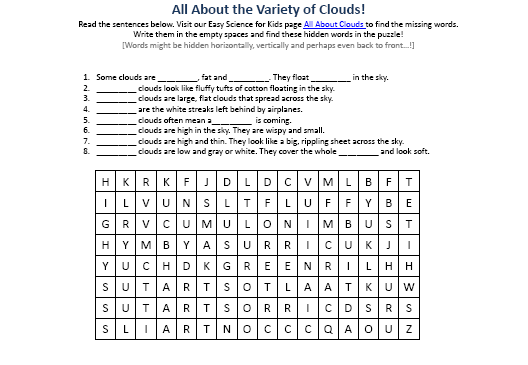



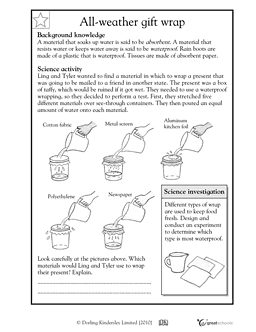
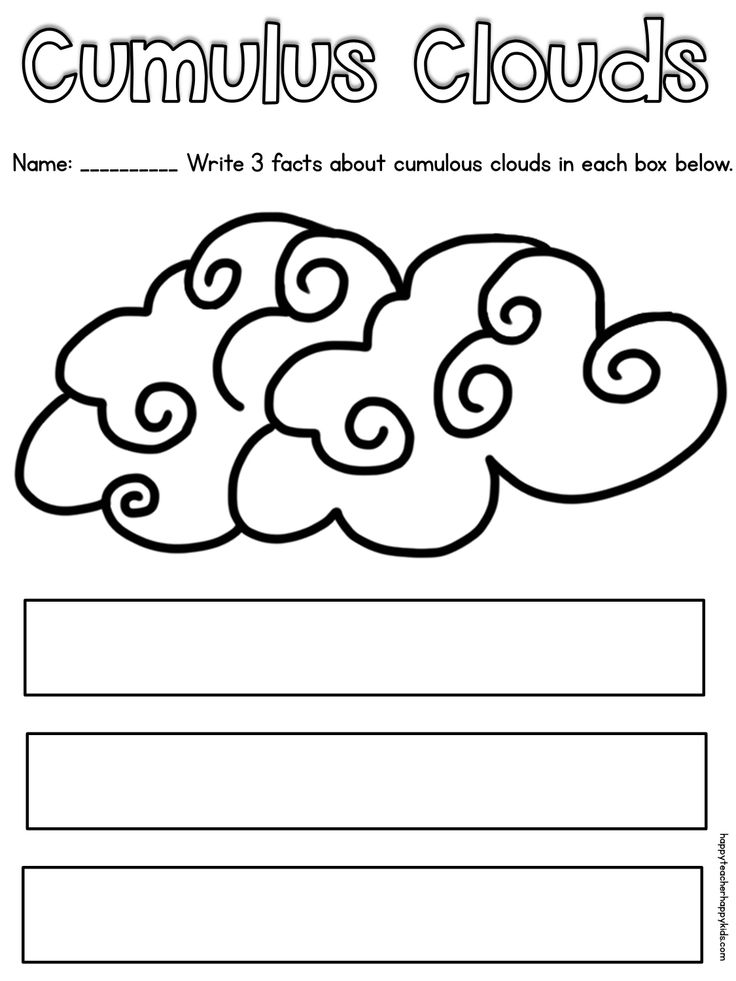
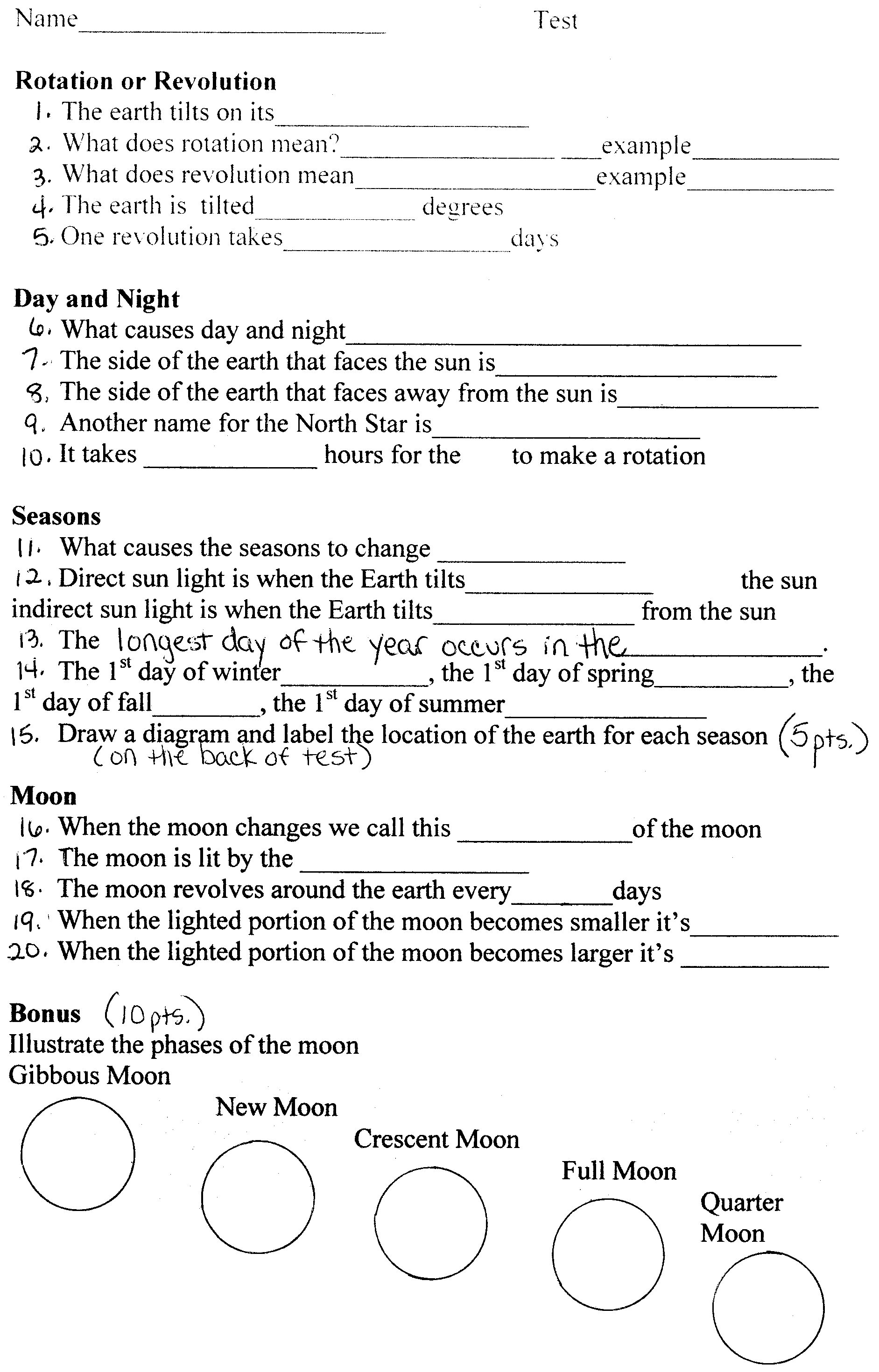

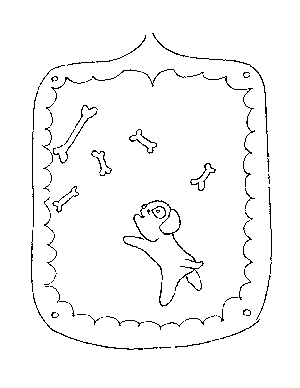
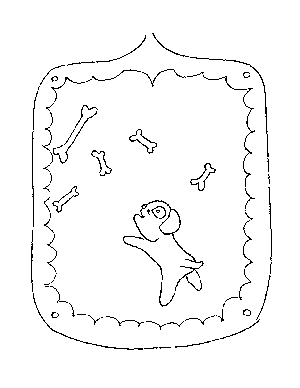
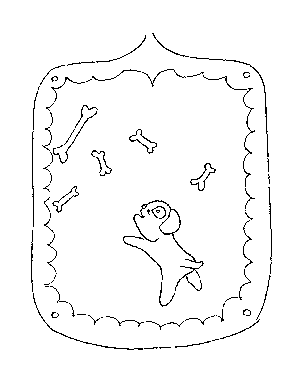
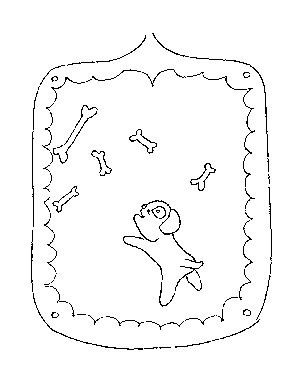

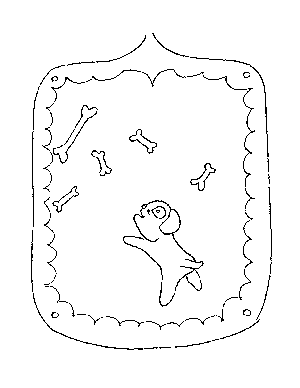
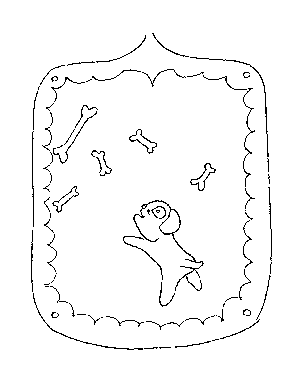














Comments